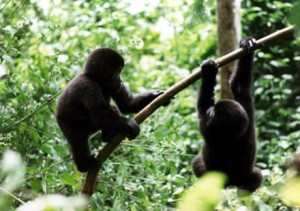This is my fourth post about creativity and its origins in play, as Dr. Stuart Brown presents the concept in his book Play (Avery Press, 2009).
Ironically, Brown’s interest in play derived from research into Charles Whitman’s killing of 14 people at the University of Texas, Austin, in 1966, the famous “Texas Tower” murders. The essential question was: What inner demons made Whitman do it? What psychological characteristics, what mental state, compelled or allowed him to commit such a horrific act?
Brown’s distinguished research team studied every aspect of Whitman’s history to determine patterns of home environment, developmental behavior, and social interaction that could have contributed to his murders. And they came up with a surprising conclusion: Whitman had been “play-suppressed.” Growing up with a dominating father in a rigidly-controlled home, he had experienced “the progressive suppression of developmentally-normal play” that “made him more vulnerable” to the impulses that led to the slaughter.
Brown claims that this finding has been echoed in other studies of mass killers, including the Virginia Tech killings of 2007.
So play’s role in mental health is clear, but how does this bear upon creativity? One link is suggested in a 2008 New York Times Magazine article “Taking Play Seriously,” based on Brown’s work: it describes play as “seriously but dangerously fun.”
To be “dangerous,” fun requires risk; risk in turn teaches us many things. Opportunities to take on measured degrees of “risk” give us self-knowledge and creative freedom that pays off later in life.
The need for extreme sports enthusiasts to take risks is obvious. But for the fine arts? Certainly. For example, honesty is central to good writing, yet it is socially risky; for many, self-revelation is scary. And disinhibition — in which artists of any kind seek freedom from self-censorship or society’s constraining conventions — is also risky in many ways.
Another common practice of artists throughout history is the intentional abandonment of ordinary sensibilities, what French Symbolist poet Rimbaud famously called “le raissoné dereglement de tous les sens.” Altered states, disordered thinking, and sensory disorientation, however attained, encourage unconventional juxtapositions of ideas that can result in original thinking — and are inevitably risky.
What about other fields? Creative innovation in science, engineering, architecture, medicine, business entrepreneurship, and even intimate human relationships — all require risk. Advance a really novel hypothesis, risk the scorn of your colleagues and maybe your funding. Put all your cash into marketing what you’re sure is a fabulous new product, risk your life savings. That’s the inherent gamble of creativity in any discipline.
In fact, risk is arguably essential for the formulation of a sense of self, the very foundation of identity, cognition, choice, and intentionality.
How so? Go back a few million years — or at least to 1995, when D.J. Povinelli and J.G. Cant published an influential paper, “Arboreal Clambering and the Evolution of Self-Conception.” Their widely-accepted theory is that primates’ (relatively heavy-bodied apes, such as humans) self-awareness evolved from their need to choose routes through tree canopies.
To test whether possibly bendable or breakable twigs can support you, you need a sense of your own weight. To decide whether you can reach the next branch, you require understanding of your size and length of limb. To assess the viability of leaping a particular distance between trees, you must have knowledge about your current spatial location relative to other things and of your own muscular strength.
Clambering thus requires awareness of the fact of self as distinct from other things, of the self’s location in space, of the self’s size and shape, of the self’s capacities and limitations, and of the self’s ability to attain what it wants — such as that choice piece of fruit in the next tree.
Willingness to take risk, learning to measure and manage it, is essential to curiosity, exploration, and experimentation — all central to creativity.
In my case, I was raised by a mother and father with highly “progressive” ideas about parenting; in their wisdom, naiveté, or hubris, they gave their kids great leeway to undertake exploratory behavior.
We developed confidence in ourselves by climbing onto rooftops or high into trees to accompany adopted squirrels. Or, as my brother and sister did, slipping into the lynx cage at the Racine, Wis., zoo to commune with the cats; or as I did, stealing my mother’s car when I was 12. Through such risky activities, we acquired insights that we then incorporated into our lives as painters, writers, inventors, entrepreneurs, friends and spouses and parents, and thinkers.
We enjoyed plenty of unstructured time and the freedom to explore, express ourselves, indulge in catharsis, sublimate real violent urges and vent them via non-injurious surrogates, conduct social experiments that gave us a sense of our relationship with other people, and create things that gave us great satisfaction. We knew ourselves to be empowered actors in the world.
Perhaps these were the elements most lacking in Charles Whitman’s childhood, and one of the reasons he felt compelled to kill in order to discover, to really be — and ultimately to extinguish — himself.





Just read the cree black series.so long ago for you but new to me. Wish There could have been more but WOW what a busy and accomplished man you are. Thanks for the great reading time. LJ